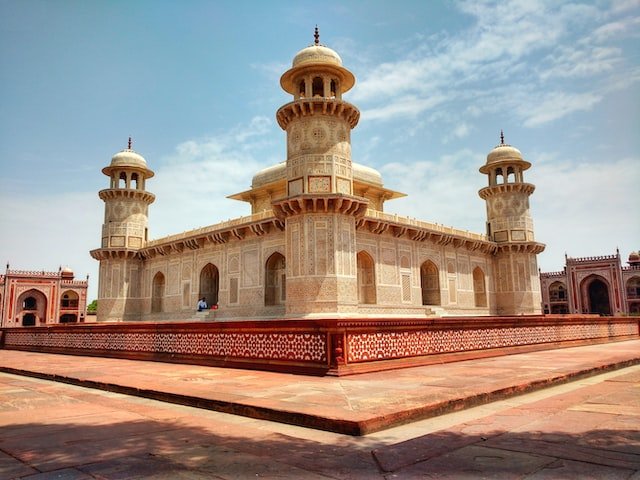Everything to Know about Itmad Ud Daula
Introduction
Itmad Ud Daula is prominently known as the baby Taj Mahal, and you can come across this when you take the Agra trip. It is often known as the copy of the Taj Mahal. This is the first Indian Tomb and was commissioned by Noor Jahan, the wife of Jahangir, for her dear father, who was also the minister in Sharjan’s court.
The tomb marks the transition from the first Mughal architecture phase to another. This was the first structure to use pietra dura and the first one to be built on the Yamuna River banks. It includes two indo Islamic architecture and uses arch entrances beside octagonal shape towers.
When you take the Taj Mahal trip, you can come across the bird’s eye view of the tomb. It looks like an outstanding jewel box is located in the garden. It is a colossal mausoleum built on the Bank of Yamuna, and it was built to inspire the construction of one of the seven wonders of the world Taj Mahal in the later years.

The Architecture Of The Tomb
The architectural design of this great tomb represents incredible Persian influences. The same style was adopted by several Agra structures, including the Taj Mahal.
Tomb
The central element of the Tomb is the Dome which is evident in the vast Persian architecture. It features a pietra dura style and also has some semi-precious stones. There are some fantastic floral and geometric structures and trees beside the inlaid stonework throughout the structure’s surface and interior. The tomb is made from white marble and placed on substantial red sandstone, which at least four monumental gateways can access.
The inner space of the tomb is divided into at least nine chambers, and the main chamber is accessible only from the southern part, which is also one of the largest chambers of all the rooms. There are floral decorations and Cypress tree decorations on the wall, which gives the main element of Persian architecture. From Gujarat, lattice jali was bought and used extensively during the Mughal throne.
Gate
When you take the Taj Mahal day tour, you must enter the tomb through the western get, a waterfront pavilion, and the northern and southern to just the central symmetry. The gates are made from red sandstone, besides having geometric designs on the white marble.
Chatteris
The square shape Tomb features a curate, which would be a turn with small chattris. They are on each corner, rising from the octagonal base. They are mainly jali works from the arched entrance of the tomb to the center of the mausoleum.
Gardens
The garden around the tomb is square and is divided into at least four quadrants, while the tomb is in between. The park mainly includes walkways and water channels, and the garden is also maintained symmetrically, which is maintained in each quadrant representing every paradise sea. The garden also features for rectangular pool featuring fountains which improve the beauty of the broad areas.
The historical Significance of The Tomb
it is the tomb of Mirza ghiyas beg and his wife Asmat Begum. The king held from Iran and visited the court of Akbar while serving him as he is Lord treasurer. In 1662 when the king died in Agra a few months after his wife’s death, his daughter Noor Jahan built the marble Tomb for her parents.
You can visit this excellent Tomb when you take the Taj Mahal tour package.

